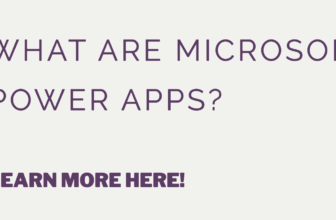Setting clear expectations when procuring software to prevent a software procurement nightmare

Software procurement has become a critical component of their success as businesses continue to rely on technology to streamline their operations. However, the process can be complex and time-consuming, often leading to unrealistic expectations and costly mistakes. This article will explore the common issues faced during software procurement, what to look for in a vendor, and how to make informed decisions to ensure a smooth go-live.
Setting Realistic Expectations
One of the most common issues during software procurement is setting unrealistic expectations. Businesses often have high hopes for what a new software solution can do for them, without fully considering the time and resources required to achieve those goals. It is crucial to have a clear understanding of the features and capabilities of the software, as well as the time and effort required to implement and maintain it.
Time to Go-Live
Another issue that can arise during software procurement is underestimating the time it takes to go live.
The time to go live refers to the period between the selection of a new software solution and the point at which it is fully implemented and ready for use. This can range from a few weeks to several months, depending on the complexity of the software, the size of the organization, and other factors. However, many businesses make the mistake of underestimating the time to go live, which can lead to delays, cost overruns, and other issues.
This can be due to a variety of factors, including the complexity of the software, the size of the organization, and the availability of resources. It is essential to have a clear timeline for implementation and to work closely with the vendor to ensure that all necessary steps are taken to achieve a successful go-live.
Common Issues
There are several common issues that businesses face during software procurement. These include selecting a solution that is not a good fit for their specific needs, not fully understanding the costs involved, and not having the necessary resources in place to implement and maintain the software. It is important to work closely with the vendor to address these issues and ensure that the chosen solution is the best fit for the organization.
One of the most common pitfalls of software procurement is failing to properly assess the organization’s needs and requirements. This can lead to selecting software that does not meet the organization’s specific needs, or is too complex for the organization to implement and use effectively. In addition, businesses may overlook important factors such as data migration, training, and support, which can significantly impact the time to go live.
What to Look For
When selecting a software vendor, it is important to look for a company that has experience working with businesses similar to yours. They should have a proven track record of success, and be able to provide references and case studies to support their claims. The vendor should also be transparent about their costs and timelines, and be willing to work closely with you to ensure a successful implementation.
Decide on the software deployment model. There are three main software deployment models to choose from: on-premise, cloud-based, and hybrid. On-premise software is installed and managed on the organization’s servers, while cloud-based software is hosted on a third-party server and accessed through the internet. Hybrid software combines on-premise and cloud-based deployment models. Organizations need to consider factors such as security, accessibility, and cost when choosing a deployment model.
Assess the software vendor’s reputation and credibility. It is crucial to work with a reputable vendor who has a proven track record of delivering quality software solutions. Organizations should research the vendor’s history, read customer reviews, and check for any past legal issues or breaches.
Evaluate the software’s scalability and flexibility. As organizations grow and change, their software needs also change. It is essential to select software that can adapt to the organization’s changing needs and can scale up or down as required.
Consider the software’s total cost of ownership (TCO). TCO includes the initial purchase price, installation, maintenance, and support costs over the software’s lifetime. Organizations need to consider the TCO when selecting software to ensure that it fits within their budget and provides value for money.
Decision Making
When making a decision about which software solution to choose, it is important to involve all stakeholders in the process. This includes IT, finance, operations, and other departments that will be impacted by the new software. It is also important to consider the long-term costs and benefits of the solution, as well as the potential risks and challenges.
In conclusion, software procurement can be a complex and challenging process, but with the right approach, it can also be a highly rewarding one. By setting realistic expectations, understanding the time and resources required, and working closely with a reputable vendor, businesses can ensure a smooth go-live and achieve their desired outcomes. It is crucial to involve all stakeholders in the decision-making process and to carefully evaluate the software vendor’s experience, track record, and transparency. With these factors in mind, businesses can make informed decisions that lead to successful software procurement and improved operations.






